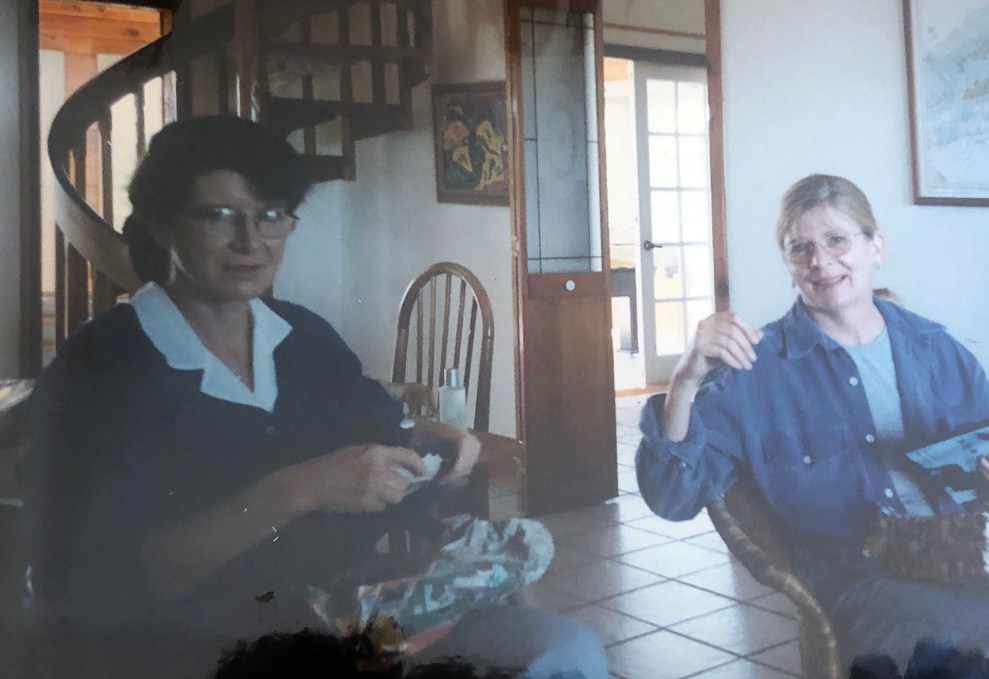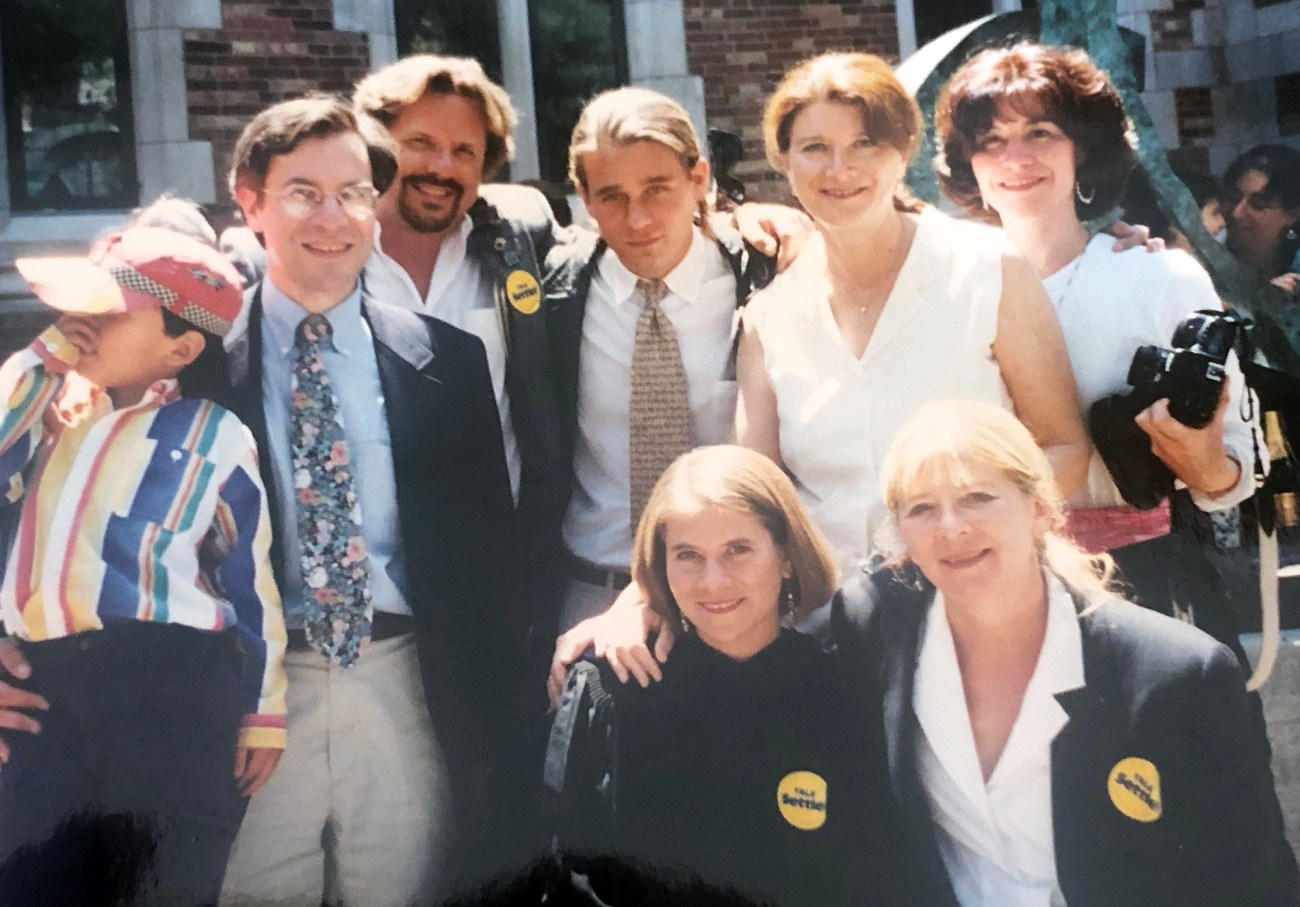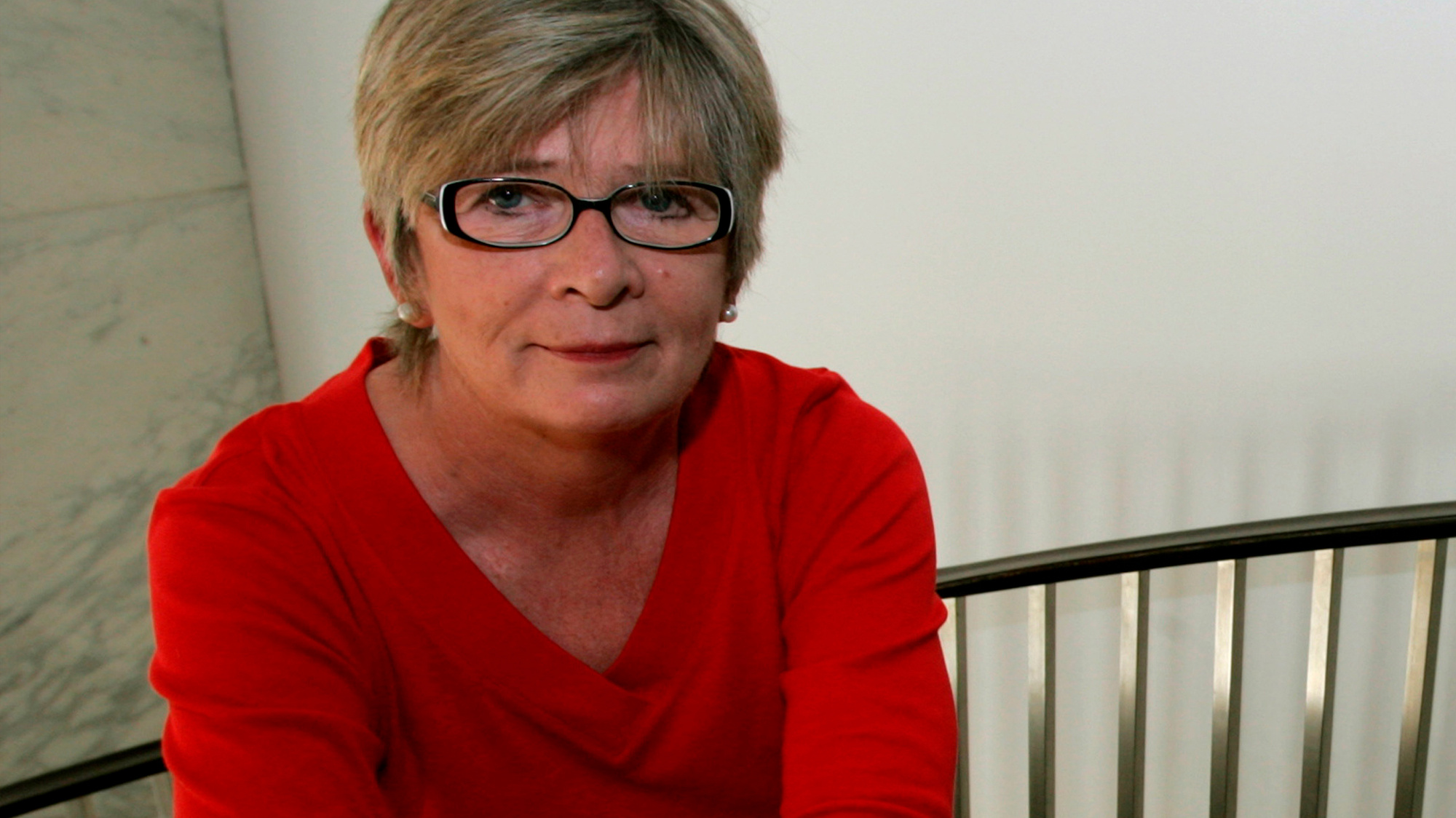In her last years, homebound during the bleak reign of Covid and suffering various maladies, Barbara Ehrenreich did what she always did: she organized an activist collective. This one was a bi-weekly Zoom study group with assorted comrades, such as former writing partners like myself, other sisters from feminism, a bunch of labor organizers, as well as her ever-caring and loyal ex-husbands, (though now married to others) John Ehrenreich and Gary Stevenson. During one meeting, as our group oscillated between bashing Republican right-wingers and belittling do-little Democrats, one member complained, “We are always saying what we are against. But we have to say what we are for.” Silence. Till Barbara pronounced decisively, “Well, we are mostly against things.”
Ever defiant, Barbara led us to be against a lot: to wake the hell up and see how vastly our society’s resources are misplaced, how grossly the poor and workers (too often the one and the same) are abused, how insulting is the consumer culture that is force-fed to us all. Barbara always saw how race, gender, and class domination interacted in systems that benefited only the rich, and spent her life fighting, in one social movement after another, for a multi-racial, anti-sexist, international working-class movement to sweep all corruptions away and inaugurate something that could honestly be called a democracy. The comprehensiveness of her truth-telling never faltered, so her exposés would seem amazing and suddenly obvious at once. And she never lost her sense of outrage.
I first met Barbara in 1971 when she and John, both Phd biologists and health-system analysts, worked at the College at Old Westbury (SUNY), where we were all hired as part of a once-in-a-lifetime assignment of inventing this new, state-supported college, and one with a “mission of social justice” at that. Our faculty was two-thirds non-white, and so was the student body we admitted. Before long, with my partner of the time, the documentary filmmaker Steve Talbot, we were all living together, and sometimes various others, in an old Victorian where we cooked and shared wonderful, talkative dinners in a shabby dining room. Barbara’s enchanting daughter Rosa was 18 months old when I met her, and we too soon became lifetime fast friends. Then came Benjy, born with blazing blue eyes like headlights, just as adorable, who would grow up to be a fierce intellectual writer like his mother, forcing us to drop the diminutive.

Deirdre English and Barbara Ehrenreich
Barbara and I were soon helping to found a women’s studies curriculum, this at a time when there were barely any good programs focusing on women, and we also began teaching a course on women’s health. Inspired by some of our students from the Caribbean and Latin America who spoke of midwives and indigenous healers in their countries, we wondered what happened to eliminate women’s traditional healing roles in the United States. The quest took us all the way back to the witch trials, then the doctor’s campaigns to outlaw midwifery, and the whole sorry story of how men came to monopolize medicine. That led to our booklet, Witches, Midwives and Nurses: A History of Women Healers (1972) We called ourselves the Glass Mountain Press (denoting sexism: you can’t climb over it but you can see through it) and we mailed the booklet out to all the new women’s bookstores, publications, centers, and clinics that were popping up everywhere in those heady days of the second-wave feminism. In Paris, Simone de Beauvoir published an excerpt in Liberation. Various translations followed.
Florence Howe, the chair of our department, founded The Feminist Press on our campus, soon took over distribution of Witches as well as our next oeuvre, Complaints and Disorders, The Sexual Politics of Sickness (1973), that focused on vast differences in how male medicine treated women of different classes, deeming upper-class 19th Century women too weak to even withstand higher education, while poor Black women were strong enough to undergo surgery without anesthesia. These class and race differentials in care and respect persist to this day—why else is maternal mortality so much higher for African American women? The topic demanded fuller treatment, and we plunged into a five-year project writing For Her Own Good: Two Centuries of the Expert’s Advice to Women, (1978; updated in 2005) documenting the patriarchal depredations of doctors, from surgeons and pediatricians to psychiatrists. Given all the condescending instruction women had gotten through the ages, from men meaning to keep them in their place, the future seemed to us to be excitingly uncharted.
As we scribbled on yellow pads, typed on typewriters, and literally cut with scissors and pasted with glue, often at a kitchen table over iced tea while the kids played outside, Barbara’s life changed. She and John divorced, sharing custody and spending every Christmas and other important dates together as a family, and even writing together again in later years as what Barbara later called “BFFs—best friends forever.” (Their classic 1977 designation of the Professional-Managerial Class, or PMC, in an article for Radical America, became an analytical touchstone on the left.)
Barbara moved to a simple house on the wrong side of the LIR tracks in Syosset, Long Island, where the public schools, on the other side of the tracks, were pretty good. Soon she introduced me and the kids to the handsome, long-haired warehouse worker and radical union organizer for the Teamsters (and for upstart reformers that fought corruption within the Teamsters) whom she had met at the local chapter of the New American Movement, which later morphed into the Democratic Socialists of America (DSA), which Barbara would co-chair starting in 1982. How cool was that?
Gary Stevenson brought a blast of energy into the place, a wave of blue jeans, black shirts, and union swag, loud laughter, and cussing, with Bruce Springsteen (mostly), Southside Johnny and the Asbury Jukes, Motown, Little Steven, Blondie, Marianne Faithfull, Joan Jett and Patti Smith for a soundtrack, plus occasional bursts of mad vacuum cleaning, and weed after dinner. Barbara stalwartly promoted the legalization of marijuana when it was not considered a very respectable cause on the (very PMC) academic left that she gleefully skewered for its low-fat, no-fun lifestyle. (Barbara herself was one of those annoying skinny people who can eat a ton of food, including the buttered and the deep-fried, and never skipped a hearty meal.)
Barbara and Gary had an epic romance while it lasted, a good 15 years, cooking up a storm in more ways than one. Years of backyard bluefish and beer barbecues, overnight dinner guests from the movement, trips to the beach with the kids and pretty much weekly militant protests and strike support actions. Benjy was five when Gary arrived, and before too long, Gary had him out there putting union leaflets on windshields in factory parking lots (“He was still so short no one saw him moving among the cars!”) Gary tells tales of Barbara’s fearlessness: at a 1977 protest of a ship docked in New York Harbor, La Esmeralda, which the dictator Pinochet had used for torture, Gary and Barbara arrived before their Chilean comrades, but the right-wing counter-protesters were there already and quickly surrounded them. “We better back off, we’re outnumbered,” said Gary, who describes with awed glee how Barbara refused to retreat and shouted in their faces as they physically threatened her: “That’s when I knew she was a force to reckon with, man!” And, he continues, Barbara as a speaker could captivate and move any crowd, working class, middle class, whatever, and when on a panel could turn any arrogant academic man “into mincemeat”: “She was a polemical pitbull!” For Barbara, it was fabulous to have a man who was lit up by her fierceness. She got to unleash her previously somewhat repressed self at protests, once saying, “It feels great to be with other people and yell!” When Benjy got caught with some high school friends smoking weed, Gary and Barbara roared with appreciation and laughter when he and the other boys demonstrated solidarity and refused to rat on their friends.”
Throughout, she maintained a disciplined writing schedule, free-lancing being her source of income once she quit academia, and she disappeared down into a dank basement study right after the kids left for school. In 1983 she published The Hearts of Men: American Dreams and the Flight From Commitment, one of the first and still best feminist dissections of the male psyche and social role, not unfriendly but incisive. By then I was living in San Francisco and had become the Editor of Mother Jones, and I put that story on our cover. After that, she contributed more sharp, funny articles for us, always one to say the unsayable, detonating one hoary middle- or upper-class shibboleth after another with panache. Editors and copyeditors rejoiced—not only was her copy always clean and perfect, without a single correction needed, but she cracked them up with her uncommon wit and sarcasm.
Looking back, I’d observe that as the progressive anti-war and student movements of “the long ’60s” ended, along with her once-planned career in science and college teaching, Barbara found her cause in socialist-feminist tendency of the women’s liberation movement of the 1970s. Then, as the women’s movement morphed too much into white upper-middle-class corporate and academic success stories in the 1980s (those Reagan years that she rightly denounced as a decade of greed) Barbara segued more fully into her base commitment, the battle for worker’s rights. That was true to her emotional origins as a daughter of the working class, whose father’s family had worked as miners in Butte, Montana, where she was born on August 26, 1941. (She died on Sept 1, 2022, less than a week after turning 81.) Butte remained a spiritual home for her, even as her family had moved from place to place (she graduated from Hollywood High). Her marriage to Gary echoed and amplified that heritage. Gary and Barbara’s last good times may have been when they bought a place in Key West, Florida in the late ’80s. There, and then in a lovely place of her own on Sugarloaf Key after they separated, Barbara finally rose out of the basement study and into gorgeous natural environs where she could kayak with dolphins and watch birds soar.
Her invigorated class consciousness never meant she left feminism behind, though. In fact she was early and eager to dispute the prevalent image of the working class as male and white, when it was and is increasingly made of minorities and women. In the Clinton era, Barbara organized feminists to fight his austere brand of welfare “reform”—which forced women into work that did not pay a living wage. Full employment, a goal that even the left too-weakly called for, meant nothing if it was all low paid employment, she argued at DSA meetings and everywhere else. Her book Fear of Falling: The Inner Life of the Middle Class (1990) drawing as it did on the PMC analysis, was a prescient account of the anxieties of middle-class families striving to give their kids every advantage to become upwardly mobile in the face of an increasing gap between their class and a desperate and drowning workforce. It rings truer than ever now, as the gap has become a chasm. Her 2001 classic Nickel and Dimed: On (not) getting by in Amerca, was all about women workers—maids, waitresses, Walmart workers—the signature jobs in the now dominant low paid service economy, as the country’s unionized manufacturing jobs (mostly for men) have largely disappeared.

Barbara Ehrenreich with family and friends
Courtesy Deirdre English
When Barbara got breast cancer, in 2000, it brought her back with a thud to face off with American profit-driven medicine. Yes, her kids, Rosa and Ben, now grown, were there as always for her, both of them excellent caregivers and cooks who also inherited the enviable family mastery of both food-loving and easy fitness that they in turn pass on to their own bright and beautiful progeny.
But the tender loving care of the medical/pharmaceutical establishment was a bad joke: for example, millions of women in the ’90s were prescribed hormone replacement pills after menopause and told it would help prevent chronic diseases, only to later discover with the massive Women’s Health Initiative study that the pills did more harm than good for most, and were linked to increased risk of breast cancer. In the meantime, the environmental causes of cancer went unstudied and unaddressed, while expensive cancer “treatments” were painful, disfiguring and ineffective. It made her furious.
But what really cheesed Barbara off was when she saw…the pink teddy bear. The whole, cutesy-poo pink-ribbon condescension of it all! The indignity! “I am not afraid of dying, she wrote, “But I am terrified of dying with a pink teddy bear tucked under my arm!” “I am a writer,” she seethed when a care package from a hospital arrived with crayons for “expressing yourself”—“and we don’t use crayons anymore!” Would men with prostate cancer be gifted with toy cars? And as for the whole misbegotten notion that positive thinking might boost your immune system: I am a scientist, she declared, and there is no evidence for that. (Later, in Natural Causes: An Epidemic of Wellness, the Certainty of Dying, and Killing Ourselves to Live Longer she would write about how the immune system could even turn lethally against the body. She was no romantic about nature, and saw its ungovernable cruelty as well as its magnificence. See her memoir, Living with a Wild God: An Unbeliever’s Search for the Truth About Everything (2014) for her unnerving mystical experience with a threatening Other.) As for those who meekly contrive to believe that “cancer is a gift,” she demanded sourly, “please—take me off your Christmas list.”
From her widely read and anthologized Harper’s article, “Welcome to Cancerland” (2001) to her slashing next major book,” Bright Sided: How the Relentless Promotion of Positive Thinking has Undermined America,” (2009) Barbara was back in true form, her angry cancer insights leading to a whole-culture analysis. She saw what everyone had missed, yet it was a streak as broad as a river, whose tributaries had reached every American subculture, from mega churches preaching the prosperity gospel (“God will provide!”) to the finance capitals that proffered endless credit; the good old American power of positive thinking had led to delusional excess. When the crash of 2008-2009 happened, it had all come tumbling down as the so-called “owners” of heavily financed homes suddenly lost them, and big banks collapsed—or were saved, with taxpayer’s money. Financialized capitalism, on the wings of wishes, prayers, and positive thinking, had gotten so obscenely leveraged that the system itself teetered.
After the end of positive thinking, the deluge: the rise of the angry, maniacal right wing, from the Tea Party to MAGA, still holding on to trashed hopes and dreams but now crazily searching for the future in the past.
And what to do about it all?
It’s good to know that her daughter Rosa Brooks and son Ben Ehrenreich inherited their mother’s passions and writing talents. Rosa is a law professor, speaker and author of several books, on war, the military and national security and, for Tangled Up in Blue, Policing the American City (2021), she spent an immersive year as an armed volunteer police officer patrolling the streets of Washington, DC. She followed that up with policy ideas and programs for police reform. She is also known for publicly warning way ahead of time that Trump would not leave office willingly if he lost to Biden in 2020, at a time when, believe it or not, no one saw that coming. Ben is a National Magazine Award-winning feature writer, a novelist and non-fiction author who wrote about life in a Palestinian village under assault and occupation, and whose erudite latest book, Desert Notebooks, A Roadmap for the End of Time (2020) is a haunting study of climate change and civilizational collapse.
Her commitment to young writers went beyond her kids, as does her legacy. For Barbara, the threat to journalism was another major cause. She came to Berkeley for a few semesters as a visiting lecturer, at the Journalism Graduate School at the University of California, where I had landed in the 2000’s. It gave us a chance to spend more good time together in California. And students enthusiastically brought her back as a commencement speaker in 2009, amid the layoffs of the Great Recession, when she exhorted them to think of themselves as members of the working class, as most reporters throughout the 20th Century had, and of their degrees as a “license to fight.”
Still, she worried that reporting, especially as a freelancer, was so badly paid that “you had to be rich to write about the poor,” she grumbled. So she founded the Economic Hardship Reporting Project in 2012, using proceeds from Nickel and Dimed, to give voice to journalism about and by working class and poor people.
Things have only gotten worse, from a labor-pay and dignity point of view, in an era of multiplying billionaires, but we must never quit, according to Barbara… and that was the drive behind the last organization she founded, our study group. She did not expect to achieve a fair society in her lifetime, but she would, and truly did, “die trying.”
So, always keep analyzing the political situation. Always think. Don’t retreat into depression, individualism, or overly indulgent “self-care”—get together with others, create community, act collectively. In her last days, Barbara was cheering for Amazon strikers and asking how she, and we, could help provide abortions for needful women.
Mother Jones said, “pray for the dead and fight like hell for the living.” But Ben Ehrenreich wrote that Barbara “…wasn’t much for thoughts and prayers, but you can honor her memory by loving one another and fighting like hell.”
















